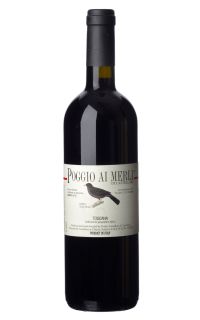All pictures shown are for illustration purpose only. Actual label may vary due to changes between vintages.
Product Notes
Castellare di Castellina Poggio ai Merli is a stunning estate located in the heart of the Chianti Classico region in Tuscany, Italy. The estate spans over 280 acres, with 42 acres of vineyards and 16 acres of olive groves, producing some of the finest wines and olive oils in the region. The property features beautifully restored traditional Tuscan buildings, including a 14th-century castle, a rural farmhouse, and a chapel. The estate also offers luxurious accommodations for guests, including private villas, a pool, and a restaurant serving exquisite Tuscan cuisine. Visitors can enjoy wine tastings, vineyard and olive grove tours, cooking classes, and horseback riding. Castellare di Castellina Poggio ai Merli is a must-visit destination for anyone looking to experience the rich history, beauty, and culture of Tuscany.
Tasting Notes
The colour is deep and vibrant purple, clear, brilliant and beautiful texture. The nose is complex and the black fruit (blackberry and blueberry in particular) prevails in a clear manner. Raspberry, cherry and plum, followed by roasted notes of cocoa, vanilla and coffee. The mouth is soft and enveloping, with fine and elegant tannins. Warm, soft and very balanced. The finish is long and harmonious with a marked fruity aftertaste.

















